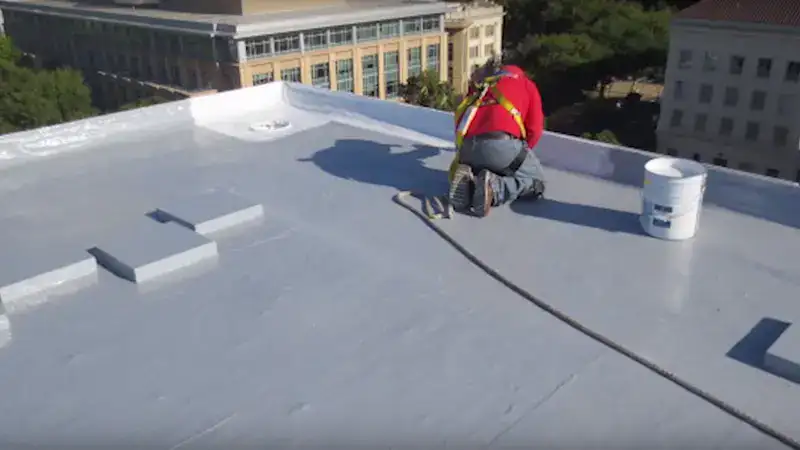Thermoplastic Olefin (TPO) roofing has been a popular choice for commercial and residential properties for several years due to its energy-efficient properties and affordability. However, despite its growing popularity, several myths about TPO roofing persist. These misconceptions often cause homeowners to hesitate when considering TPO as a roofing option. We will explore and debunk some of the most common myths surrounding TPO roofing, providing clarity on the actual benefits and limitations of this roofing material. By understanding these truths, you can make a more informed decision when it comes time to replace or install a roof.
Myth 1: TPO Roofing is Not Durable Enough
One of the most widespread myths about TPO roofing is that it is not durable enough to withstand harsh weather conditions or the test of time. This misconception likely arises from TPO being a relatively new roofing material compared to traditional options like asphalt or metal. However, TPO roofing has proven to be highly durable, particularly when installed correctly. It is designed to resist tears, punctures, and UV damage, making it an excellent choice for various climates. TPO’s heat-welded seams create a seamless barrier that significantly reduces the chances of leaks.
Moreover, advancements in manufacturing have enhanced the overall strength and longevity of TPO roofing, with some systems lasting up to 30 years with proper maintenance. As long as your TPO roof is installed by a reliable roofing contractor like Elevate Roofing Pros, its durability should not be questioned.
Myth 2: TPO Roofing Is Prone to Fading and Discoloration
Another myth that often circulates regarding TPO is that the material fades or discolors quickly, detracting from the aesthetic appeal of a home or building. While it’s true that TPO roofs can experience some degree of color change over time due to prolonged sun exposure, this does not mean they become unattractive or ineffective. The color fading is minimal and does not impact the roof material’s performance.
TPO roofs are available in various colors, and while the white option is the most popular for its energy efficiency, TPO systems come in other shades as well. Modern TPO formulations to combat potential discoloration, including UV inhibitors, help preserve the roof’s appearance and protect against premature aging. With routine cleaning and care, TPO roofs can maintain their appearance for years, allowing homeowners to enjoy functionality and style.
Myth 3: TPO Roofing Is Not Energy Efficient
Many homeowners believe TPO roofing is less energy-efficient than other roof materials like reflective coatings or traditional shingles. This myth likely stems from confusion surrounding the reflective properties of TPO. In reality, TPO is known for its impressive energy efficiency, one of its most attractive features. TPO has reflective properties that help reduce heat absorption, which can lower cooling costs, especially in warmer climates. The white TPO options, in particular, reflect more sunlight than darker materials, keeping the interior of a building cooler and reducing the load on air conditioning systems. As a result, TPO roof is an environmentally friendly option that can save homeowners money on energy bills. The energy savings over time can offset the initial installation cost, making TPO a wise investment in the long run.
Myth 4: TPO Roofing Requires High Maintenance
Another common myth is that TPO roofing requires constant maintenance and upkeep to remain in good condition. While all roof materials need some maintenance, TPO roof has relatively low maintenance compared to other options. TPO’s durable surface resists the buildup of dirt, debris, and algae, which means fewer cleaning and repairs are needed. Routine inspections, especially after severe weather, are recommended to ensure the roof remains in top condition, but the level of maintenance required for TPO is minimal.
Compared to asphalt or metal roofs, which may require periodic coating or resurfacing, TPO roofs are more resistant to wear and tear, requiring less effort to maintain. Elevate Roof Pros can guide homeowners on caring for their TPO roof, ensuring it continues to perform efficiently for years.
Myth 5: TPO Roofing Is Expensive to Install
Cost is often a significant concern when choosing a roof material, and many homeowners assume that TPO roofing is prohibitively expensive. However, TPO is often one of the most cost-effective roof options, especially compared to alternatives like metal or slate. The materials are relatively inexpensive, and installation is typically quicker and easier, reducing labor costs. TPO’s long-term energy savings and low maintenance requirements can offset its initial installation cost. Homeowners who choose TPO can save money on their energy bills and the potential cost of repairs or replacements in the long run. Elevate Roof Pros can provide a cost-effective estimate for TPO roof, ensuring homeowners receive an affordable, high-quality solution that meets their needs.
TPO roofing is often misunderstood, with several myths circulating that discourage homeowners from considering it a roof solution. TPO is durable, energy-efficient, low-maintenance, cost-effective, and environmentally friendly. Homeowners can make an informed decision that suits their needs by understanding the facts and dispelling the misconceptions about TPO roofing. Contact us for more details .
Elevate Roofing Pros is dedicated to providing high-quality roofing solutions that meet the demands of both residential and commercial properties. If you are considering TPO for your roof, contact a professional contractor who can guide you through the process and help you make the best choice for your property.
